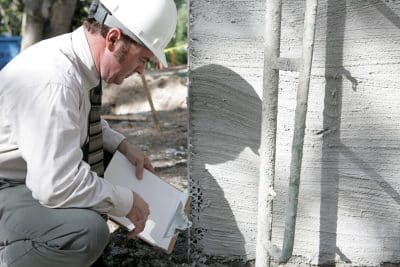
It is an exciting time in life: buying a new home, so full of new opportunities and the pride of ownership. Yet, in the midst of celebrating such an occasion, there is one very important duty that is often overlooked: providing the correct insurance for your house. Unlike either renters or auto insurance, new home insurance entails more complex considerations, given the unique characteristics of every property. In this article, we will go into those grey, less-discussed areas of new home insurance to help build an ironclad safety net around your new investment.
Key Importance of New Home Insurance
Buying a home is not only a financial exercise but a commitment for at least a decade or two. The new house will remain one of your most valuable assets, a receptacle of memories that you are about to make, and your tangible possessions. Yet, ownership of a home introduces elements of risk not within your control: natural disasters, accidental damage, theft, and liability concerns. This is where new home insurance becomes an indispensable pillar of protection.
However, the real profundity of house insurance goes way beyond picking a generic policy. Understanding the layers of cover that are available and creating a bespoke policy that truly fits your specific home is the key to choosing the best insurance for your needs. Insurance should be so much more than a box to check off with your mortgage lender; it’s supposed to protect against life’s unknowns.
More Than the Basics: What Does New Home Insurance Truly Cover?
While most homeowners generally have an idea about what is covered under home insurance, the scope of what would fall under a comprehensive policy might be surprising. Here’s an overview of the key components and an explanation of how each can interact to create wide-ranging coverage.
1. Dwelling Insurance: More Than Just the Structure
Dwelling insurance covers the physical structure of your home. Everything from the roof down to the foundation is covered under this policy. It typically includes things like built-in appliances and cabinetry, along with attachments such as decks and porches. When a disaster strikes, it’s so much more than reconstructing the walls; it’s rebuilding the complete environment you call home.
2. Personal Property Protection: Covering Your Lifestyle
Every day, the accumulation of personal possessions continues to grow for a homeowner: electronics, fine art, kitchenware, and even family heirlooms. Personal property protection is not a blanket coverage, though. The smart homeowner can take out separate “riders” or scheduled policies on high-value items such as jewelry or antiques. This ensures they are covered at full value if standard limits would fall short.
3. Liability Protection: The Often Overlooked Lifesaver
It might sound silly to have liability coverage until there is a big legal claim against you. Whether someone tripped in front of your residence due to an uneven sidewalk or your dog bit someone, you might be held financially liable. Liability protection doesn’t just stop at medical bills; it also stretches to cover all the legal costs arising from the issue, settlement, or even compensation for lost wages if that person cannot work. Besides, it is more than just an afterthought; it’s peace of mind against an unpredictable situation.
4. Additional Living Expenses: Keeping You Comfortable
When disaster strikes, your home could become uninhabitable for weeks or months. Loss of use, or additional living expenses (ALE) coverage, pays for temporary housing, food, and other essential living costs. The importance of this coverage can’t be overstated—just imagine trying to find housing after a fire or major storm in a saturated rental market.
Location Matters: How Geographic Risks Shape Insurance Needs
One of the really distinguishing features of new home insurance is how deeply it is influenced by where one lives. For instance, insurance companies break down location-based risks into proximity to sources of water, historical weather patterns, and even crime rates in a neighborhood.
1. Flood and Earthquake Zones
Contrary to popular opinion, the majority of general home insurance policies do not include floods within their coverage. Homeowners within high-risk areas due to flooding will have to get separate insurance to cover this peril, while earthquake protection is generally given as an optional choice. If you live near coastlines, rivers, or in geologically active areas of the Earth, these added policies become essential to your comprehensive coverage.
2. Wildfires and Windstorm Areas
Some areas are more prone to wildfires or strong windstorms. Insurance companies can charge different rates for your policy. Depending on whether you live near a highly wooded area prone to wildfires or in an area known as tornado alley, the charge may be higher. By knowing these specific risks, you can take steps to improve your policy now, usually by adding appropriate endorsements for those risks.
Myths and Misconceptions About New Home Insurance
Many new homeowners fall for some basic myths when buying new home insurance. It will definitely be worth your while to make sure that you do not get caught out, so it is time to take a closer look and dismiss those myths once and for all.
1. “I Only Need to Insure My Home for Its Market Value”
One big mistake is insuring your home for its market value rather than the full replacement cost. While the market value may fluctuate up or down, rebuilding a house after a disaster requires raw materials, labor costs, and sometimes inflation-driven rises in construction costs. Make sure your policy covers the complete cost to rebuild; that could be quite a bit higher than your purchase price, especially in an improving construction market.
2. “I Don’t Need Flood Insurance Because I’m Not in a Flood Zone”
Recent extreme weather trends prove floods can happen just about anywhere. Thus, if your home was built on a slope, near rivers, or on land prone to heavy rainfall, you may want to inquire about flood insurance policies.
3. “My Personal Property Coverage Will Replace Everything I Own”
While personal property coverage provides a great deal of protection, many policies have specific limits on certain categories like electronics, high-value goods, or rare collections. Note that items of higher value may require an individual policy in their own right in order to be fully covered.
How to Tailor Your New Home Insurance Policy
Insurance for a new home is complex, and a cookie-cutter policy won’t offer you the protection you might need. Personalizing your insurance means that the uniqueness of your home, your lifestyle, and the associated risk will be covered just right.
1. Riders on High-Value Items
If you have many high-value items in your home, such as fine jewelry, high-end musical instruments, or designer handbags, you must ask your insurance professional about getting specific riders. These special policies tend to fully cover the things you treasure most and often without depreciation.
2. Raising Liability Limits
Those who own larger properties, have pools or receive company quite often may want to increase their liability limits for further protection against possible lawsuits or claims. You also can get an umbrella policy to get additional liability coverage on top of the home insurance policy limits.
3. Bundling Policies for Savings
Many insurance companies offer discounts for having multiple policies with them—in this case, home and auto. This not only streamlines your insurance but can also save you quite a bit of money over time.
Conclusion: Your Home, Your Security
A home is more than a building. It’s a foundation for your life. Though most things are unforeseeable in homeownership, finding the right home insurance doesn’t have to be one of those things. Protecting against everything from common risks such as fire and theft to more specialized concerns like flooding or personal liability requires an informed approach to keep that safe haven called home.
By investing in the proper home insurance coverage, you invest in the peace of mind that comes with knowing your home and your financial future- and you are protected from life’s uncertainties.








